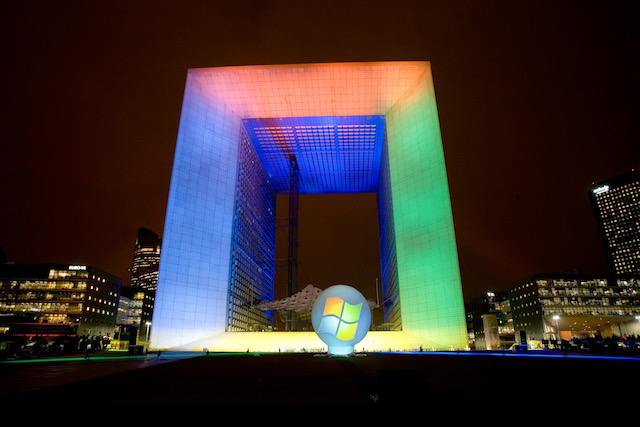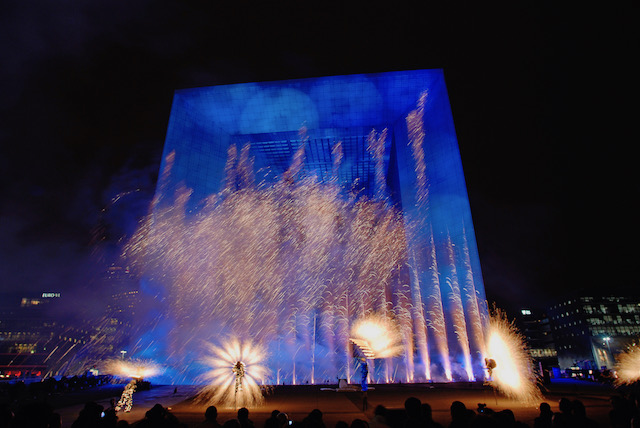12 November 2017 | Articles, Articles 2017, Communications | By Christophe Lachnitt
The Creation Of Experiences Is The Equivalent Of Storytelling For Events
The intrinsic advantages of digital media are said to make it the ultimate communications vehicle. Many believe that offline activities, including events, are on the verge of becoming commodities and that digital strategies are universally taking over.
Yet, as Mark Twain could have said, the reports of the death of events are greatly exaggerated. Indeed, the advent of digital technologies and media is creating an opportunity for events because of the two scarcities it generates.
From the lack of information to the lack of emotion
First, the Internet has killed information scarcity. Today, the typical social media user consumes 285 pieces of content daily, which equates to 54,000 words, 1,000 clickable links and 443 minutes of video. That excess of information leads to attention scarcity.
When people are overwhelmed with the volume of information confronting them, they have difficulty discerning what to focus on. Attention rather than information becomes the critical resource.
Emotion is the prime stimulator of attention. Yet, brands are still too rarely injecting emotion into content creation. Depending on the channel, emotion can stem from two factors: Storytelling techniques and the creation of experiences (that I call storyliving).
“Emotion can stem from two factors: Storytelling techniques and the creation of experiences (that I call storyliving).“
Storyliving is the equivalent of storytelling for events. Both techniques combine information and emotion. The emotions conveyed by an experience or a story help audiences to memorize and embrace the information it contains. The confluence of these two approaches explains the increased importance of content production in the production of brand events.
Experiences engage audiences in the age of information overload where all URL links are equal and ad blockers are growing in popularity.
That phenomenon also explains the rise of experiential marketing – content that people can touch, feel or see in a physical space. Rather than looking at consumers as passive receivers of messages, experiential marketing encourages participation from the consumers as they are now used to doing on social networks. Experiential marketing can even create the “WOW” factor that motivates 47 percent of consumers who attend a brand event to share their experiences on the social web.
The value of experiences can also be observed in art (museums are shifting from storehouse to attractions), music (concerts are one of the few consistently growing, non-digital segments of the industry), and sports (professional teams are enhancing their fans’ experience in stadiums and arenas) industries.
Similarly, physical stores are also increasingly resorting to eventful tactics in order to compete with e-commerce juggernauts. The immersive shopping experiences created by these tactics generate strong purchasing incentives, brand affinity and customer loyalty. Even successful online retailers such as Warby Parker are building physical stores in order to create customer-centric, engaging experiences.
In all sectors, the name of the game is to create experiences that can’t be matched online and to use digital media to cultivate conversations with one’s audiences.


Windows Vista’s B2C launch event (March 30, 2007), one my fondest event communications memories – (CC) Jean-Claude Guilloux for Microsoft
From scarcity of targeting to mass scarcity
Moreover, the Internet has killed channel scarcity by making content distribution free. Therefore, audience fragmentation is king on digital media. The whole digital world is breaking down into niches.
One can reach online any group of individuals interested in the most specific, inconspicuous topic. As Google’s Robert Kyncl once said, “the digital empire, even as it grows, will remain an archipelago of tiny kingdoms.”
As a result, mass audiences are the new scarcity because it is increasingly difficult to reach millions of people at once. Before the Internet, media companies were paid to overcome channel scarcity. Nowadays, their real value is often in imposing it.
From events to experiences
Events provide the cure for digital scarcities: They create experiences and gather a brand’s audience – be it internal or external – at the same time for the same purpose. They can also create participation beyond their physical location by the volume of conversations they spark, including on the Socialsphere. Paradoxically, digital technologies provide them with an even stronger differentiator than that they enjoyed in the analog age.
“Paradoxically, digital technologies provide them with an even stronger differentiator than that they enjoyed in the analog age.”
To make the most of that advantage, brands must design their events in a convergence perspective: Hybrid physical-digital events will prevail. Digital is not the solution for events. But there is no solution without digital. All events will become hybrid.
The physical and virtual worlds have merged, thanks in great part to the bridge created by digital and mobile technologies. As a result, individuals and companies alike no longer differentiate between both worlds. Not only do digital and mobile cross a line between physical and virtual endeavors, they erase it.
Increasingly, brand events will provide, through their hybridization, a single experience to on-site and remote audiences. They will use social networks to fuel their interaction with their extended audiences. They will have an impact over a longer duration than that of their physical occurrence. And they will give access, on dedicated websites, to their content – those created by brands in a physical realm and those generated by their audiences in the digital space. In truth, the return on investment of events will be more determined by their digital echo over time than their live success in their physical location.
“The return on investment of events will be more determined by their digital echo over time than their live success in their physical location.“
Another benefit of the hybridization of events will be the ability for brands to better measure their impact and collect more customer information. Until now, the collection of said information caused a greater discomfort to those concerned in a physical event than on the Internet. The advent of several digital practices, before, during and after a brand event, changes that situation.
For example, SAP generates 60 percent of its revenues from events and uses application data to inform sales representatives of prospects’ interests. In turn, this data allows the representatives to tailor their conversations to those prospects’ interests and focus on the most appropriate bundle of products and services. SAP credits this approach with increasing sales by as much as 25 percent where it has been used. SAP’s strategy illustrates one of the key advantages of event data compared with digital data: It can be smarter because it is often collected through discussions with the concerned people.
However, to be actionable, data needs context. Marketers need to turn big data into smart data, i.e. the data that filters out the noise to focus on the signal. Only smart data creates value. Often, the decisive information lies in “little data,” not big data.
The last reason that underpins my confidence in the future of events is that, despite their digital focus, 80 percent of Millennials and 78 percent of Generation X members prefer face-to-face meetings.
Events have a bright future ahead of them.


